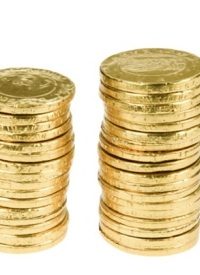
The price of gold as measured against the U.S. dollar hit a record $1,341 per ounce at the close of commodities market day October 5, just after the Bank of Japan announced plans to lower interest rates to zero and create $60 billion in new currency. Silver, copper, platinum, palladium, and most other commodities also measured recent highs in trading on the same day.
Bloomberg.com explained that the rally in gold is less due to greater relative value in gold than it is in the free-fall in the value of the U.S. dollar: “The dollar fell to an eight-month low against the euro after Japan’s decision to lower interest rates and buy $60 billion of assets bolstered expectations the Federal Reserve will take more steps to reinforce growth. Gold has climbed 23 percent this year as low rates made the metal more competitive against bonds and cash. Unlike bonds, gold doesn’t pay interest.”
Just weeks before the Bank of Japan decision, officials from the U.S. Federal Reserve Bank had set off another gold rally by hinting of additional “quantitative easing,” which is banker lingo for inflating the amount of currency in circulation. At the height of the recession, the Federal Reserve created $1.25 trillion by purchasing U.S. Treasury bills.
The increased reality of quantitative easing (i.e., inflation) among many central banks around the world has caused some reliable financial analysts to begin talking about global currency destruction, a financial race to the bottom by central banks around the world with the idea of avoiding “deflation” and creating a stimulus for the economy. The lower the relative value of a currency, the cheaper exports can be sold in foreign markets. But this presumes a stability on other currencies, something many central banks are working hard to avoid. As a result, central banks appear to be in a currency race to the bottom. And U.S. stocks rallied October 5, though the increases in stock prices such as the Dow Jones Industrial Average and the S&P 500 are measured in the fast-falling U.S. dollar.
But rather than a vigorous investment in the markets, global currency destruction has led a run toward commodities as an inflation hedge, especially toward gold and other precious metals. “People are starting to see gold as somewhat of a currency, particularly with the world flooded with cheap money,” Charles Nedoss, senior market strategist at Olympus Futures Inc. told MarketWatch.com.



